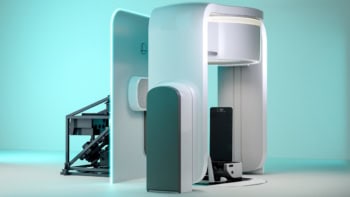Many medical tests involve measuring the conductivity of a patient's blood. This is particularly true when treating stroke victims. However, most existing tests involve taking a blood sample from the patient. Now researchers at Marquette Medical Systems of Milwaukee and the Cleveland Clinic Foundation in Ohio have patented a way to measure blood conductivity inside the body (Patent 5827192).
Doctors need to measure blood conductivity to calculate the internal pump volume of the heart and the blood circulation rate. However, when patients receive additional fluids – for example, water, drips or drugs during surgery – the conductivity can fluctuate. The new system is able to measure these changing conductance levels in real time.
The device works by inserting a catheter (a flexible tube) containing a series of electrodes into the main pump chamber of the heart. By applying a small constant current to the electrodes and measuring the potential difference between each pair of electrodes, it is possible to calculate the conductivity using a simple formula. The first tests of the technique are now being carried out at the Cleveland Clinic Foundation.



